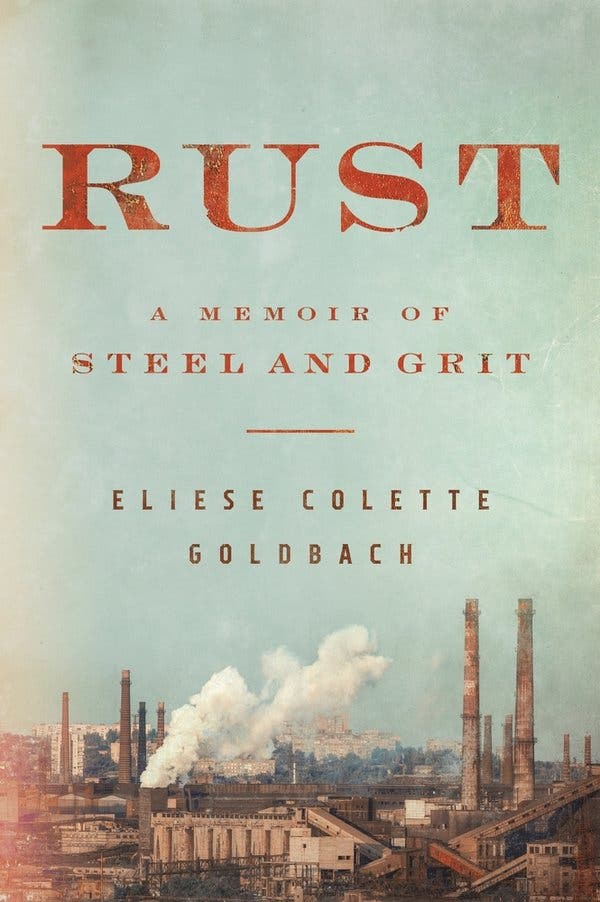RUST
A Memoir of Steel and Grit
By Eliese Colette Goldbach
Everyone who grows up in Cleveland is familiar with the sight of the orange flame that burns over the steel mill in the industrial valley along the Cuyahoga River. In “Rust: A Memoir of Steel and Grit,” Eliese Colette Goldbach describes working under that flame — the “flare stack” — beginning with the day in the spring of 2016 when she pulls into the parking lot and becomes Utility Worker No. 6691. The mill is a vast dystopian landscape, “a grisly amusement park,” with chimneys jutting up at freakish angles, crumbling concrete, stairways to nowhere, gantry cranes, catwalks — and everything, even the workers in their jumpsuits and hard hats, is covered in dust. The noise is thunderous, and the place stinks, too. But the pay is good, and the new recruits are made to feel as if they’d won the lottery.
“Rust” has elements of Tara Westover’s “Educated,” but Goldbach’s background is not as extreme. She went to Catholic schools and asked the Blessed Virgin Mary for a sign that she should become a nun. Her father was a conservative and a gun owner but not a fanatic. He ran a pawnshop, and one of the items in the pawnshop that pleased young Eliese most was a toilet seat made of pennies. All this rings true to my own experience, two generations earlier, growing up Catholic on the West Side of Cleveland — except the toilet seat. My idea of art was a holographic image of Christ, in a drugstore window, that flickered back and forth between the Crucifixion and the Resurrection.
There were times, while reading “Rust,” when I wanted to shout at the author, like a kid at a horror movie, “No! Don’t open that door!” The first time was at her decision to go to graduate school in English, which left her painting houses and living in a dump. It was the struggle to pay off her student loans that prompted her to apply for a job at the steel mill. Goldbach is interested in the chemistry of steelmaking, but she swiftly comes to understand that “most steelworkers didn’t know how steel was made. … Everyone knew the few steps they were personally responsible for.” In the breakrooms, the “shanties, booths, and pulpits” in the mill where the employees could go to warm up or cool off, she listens as the old-timers exchange stories, often about people who were crushed when a coil flipped (finished sheets of steel are rolled into coils) or a forklift toppled. At one point, Goldbach trains in the Hot Dip Galvanizing Line, skimming dross off a vat of molten zinc. If you had the misfortune to fall in — and it had happened — it could “cook you alive.”

I also flinched at her original choice of college: the Franciscan University of Steubenville, Ohio. Many memoirs have at their heart a trauma that must be approached obliquely and transformed into a turning point. During her first semester away, Goldbach, drunk and possibly drugged at a party, was raped by two upstanding young men, and everything she did in the aftermath — confide in a friend, confess to a priest, report to the institutional authorities — had the worst possible outcome. She tells us at the outset that she has a genetic and biological propensity for bipolar disorder, and it is in Steubenville that it emerges. Unhinged, she returns to Cleveland.
 EU News Digest Latest News & Updates
EU News Digest Latest News & Updates



